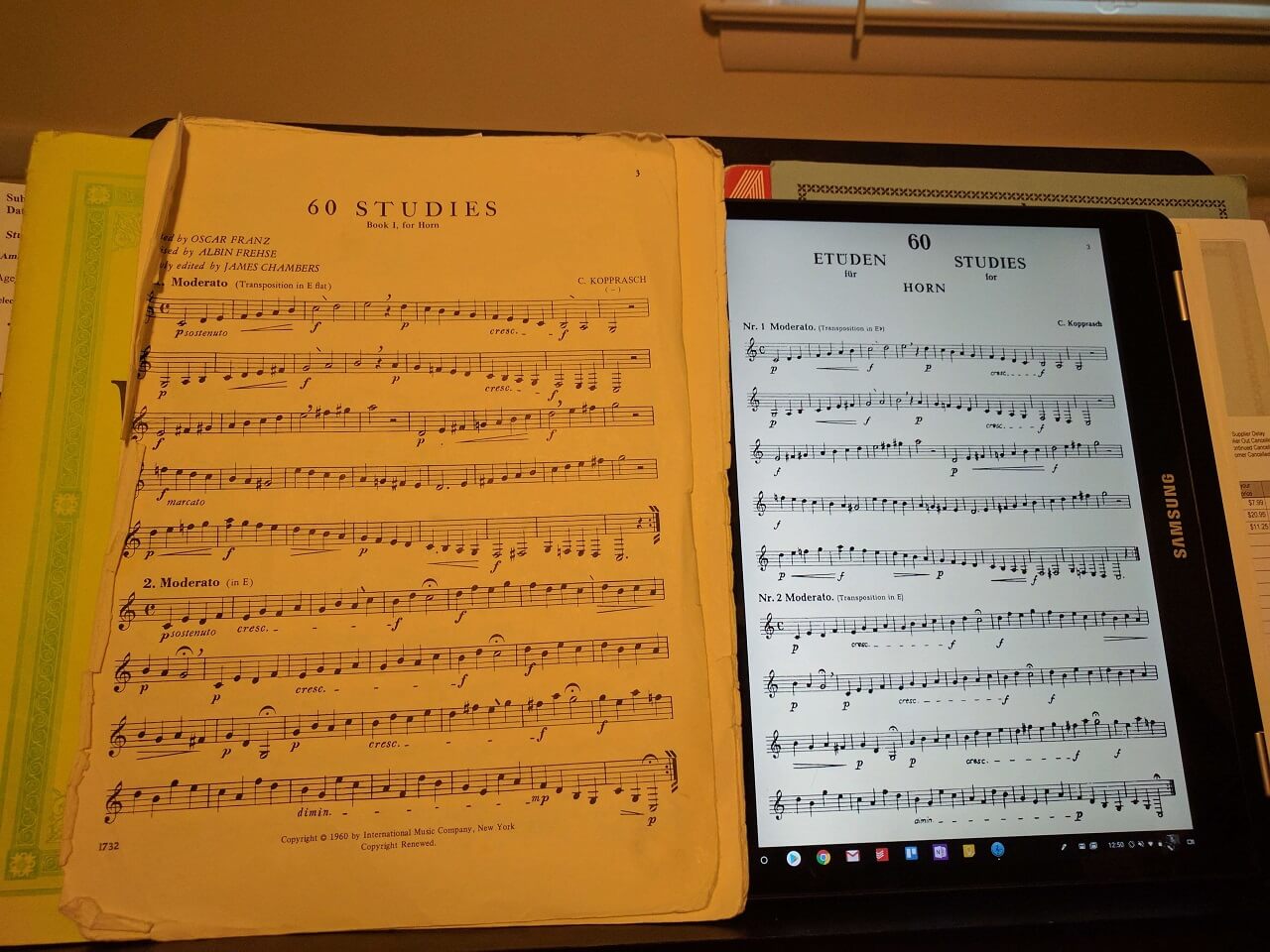I’ve really been enjoying my digital music setup over the past few years.
But the amount of flexibility and the sheer number of options available in the Android app I use (MobileSheets Pro) means that the learning curve (even for a tech-savvy user) can be extreme.
To help make things a bit easier for other Android tablet users, I’ve put together a few of my personal favorite MobileSheets Pro tips.
MobileSheets Pro Tips
Use PDF Bookmarks
For large, related books I think it’s a lot easier to use bookmarks inside of a PDF rather than separate files. I’ve found this especially true for musicals.
The old way I would do musical scores is to save every song as an individual file, and then combine them all together in a single setlist. This worked okay, but it meant that I have lots of random files floating around my “All Songs” list that make it look messy and aren’t very useful. I never actually need one song from a musical – I need either the entire musical score or nothing.
Enter bookmarks.
The bookmarks feature allows you to easily find a specific song in a large collection (very useful for rehearsal) while keeping a complete musical together with having lots of different setlists.
You can create bookmarks in most PDF readers or even in MobileSheets Pro itself.
While you’re looking at a piece of music, click the center of the screen to enter into the “overlay” mode. This gives you lots of options for things you can do to a file.
Tapping the plus (+) icon will add a bookmark at the current location, and you can tap on a bookmark to go to a specific section of the file.
Very handy!
Link Points
Link points are easy ways to move around a song in a non-linear fashion.
If, for example, you have a two-page cut or a DS marking that skips back three pages and then skips forward 4 pages to the coda, link points can save you a lot of frantic tapping.
To make a link point, activate the overlay and press on the “button pushing” icon:
Then you tap where you want the initial link point to be, scroll to the desired “linked” page, and tap where you want the link point to end up.
The link points are color-coded to help you keep track of which link points are linked together.
One small negative – I don’t think it’s currently possible to use link points with a pedal. That is, there’s no way for your pedal to “tap” on a link point (since you can have multiple links on one page), so this is something you have to use your finger for. However, I still use link points (especially for strange cuts in musicals) since it serves as a visual reminder to make the cut plus it takes me where I need to go right away.
Shortcuts
MobileSheets Pro has a lot of shortcut possibilities.
Shortcuts allow you to perform lots of different actions by pressing on different sections of the screen (top left, bottom right, etc.) or with 2 or 3 fingers.
You can see a complete listing of the shortcut possibilities and actions by going to:
Menu → Touch & Pedal Settings → Touch actions. It looks like:
My preferred arrangement is:
- 2-finger tap: Annotate song (for quick access to marking up music.
- 3-finger tap: Return to the music library
- Bottom center tap: Show bookmarks
- Top left tap: Start/stop metronome
This covers most of what I need during a typical rehearsal or practice session.
I see a lot of people that don’t even know this feature exists, and I think it really makes it much easier to navigate around!
Cropping
MobileSheets Pro has a built-in feature to crop music, so you don’t have to use a PDF or image editor software to get your music the right size.
I find that cropping can help to make parts more readable, especially if you have a smaller-screen ChromeOS or Android device. Or if you’re trying to view two pages side-by-side.
You can access the cropping feature from the edit menu.
From here, you can click on the “Files” label:
And then click on the crop icon in the bottom-right:
You can use the blue squares to crop the PDF file however you see fit. MobileSheets Pro has a very conservative auto-crop, so for cramped scores or parts, you may find that you can get the part much bigger by manually cropping a few pages.
Here’s the before with two pages side-by-side on a small, handwritten part:
And here’s the after image:
It’s not life-changing, but it definitely makes some of these smaller or handwritten parts a bit easier to read.
Performance Mode
MobileSheets Pro also has a “performance mode”.
Performance mode disables the “overlay” mode, as well as the zoom feature so that taps on the center of the screen will turn pages.
However, corner shortcuts (like access to the metronome and bookmarks) are still functional. Since I use shortcuts for almost everything, I like to keep performance mode on for most rehearsals and concerts, since it makes it navigating around quickly much easier.
Have other shortcuts or tips for using MobileSheets Pro (or ForScore for iOS?) Leave a comment below!











Leave a Reply
You must be logged in to post a comment.